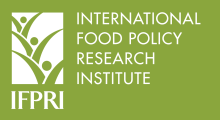Resource information
Public agricultural extension systems often fail due to inadequate consultation of farmers about their information needs and poor understanding of their information search strategies. In discussing and implementing extension programs and advisory services, the following questions need to be addressed: What information do the farmers need? How and where do they search for information? What factors determine their search behavior? How much are they willing to pay for information? While the first two questions are addressed fairly well in the literature, the latter two have not yet been dealt with in the context of developing countries. Using a case study of two districts in South India, we examine farmers’ information needs and information search behavior, factors affecting their search behavior, and their willingness to pay for information. Cluster analysis on access, frequency, and use of information sources identified four farmer information search behaviors—high, medium, semi-medium, and low. The groups differed significantly by post–high school studies, household economic status, cultivated land area, agricultural income, and membership in a farmer-based organization (FBO) and a primary agricultural cooperative bank (PACB). We use these four information search behavior clusters to examine differences in information needs, sources used, and preferred sources. The important information needs relating to rice included pest and disease management, pesticide and fertilizer application, seed variety, and seed treatment. Rice production practices and credit information were more important for the low search group. Private input dealers and the state department of agricultural extension staff were the main information sources, though use of these two sources decreased with greater information searching. High and medium searchers used a greater number of sources, which also included print media and television. The major constraints to information access, common to all search groups, were poor reliability and timeliness. The preferred medium for obtaining information was interpersonal contacts, followed by information via mobile phones, where a helpline or voice messages were preferred over short message service (SMS). A contingent valuation technique revealed that farmers’ willingness to pay for voice-based mobile phone messages was low. The results show that tailoring the delivery of agricultural information to the different information search behaviors of farmers is important for extension programs to consider.


